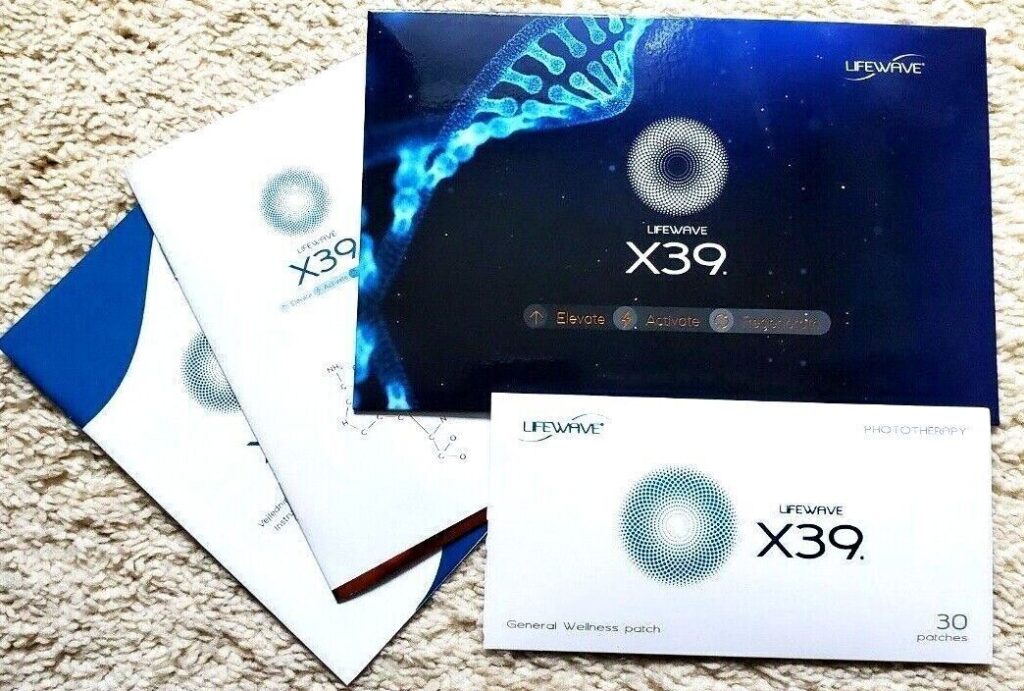In this comprehensive guide to the healing power of infrared light therapy, you will discover the transformative benefits that this groundbreaking treatment can have on your overall well-being. Explore the science behind infrared light therapy and learn how it works to relieve pain, reduce inflammation, promote healing, and boost your immune system. Discover the different types of infrared devices available and how to incorporate them into your daily routine. With this comprehensive guide, you’ll gain the knowledge and tools you need to harness the incredible healing power of infrared light therapy for a healthier, happier you.
What is Infrared Light Therapy?
Definition of Infrared Light Therapy
Infrared light therapy is a non-invasive treatment that utilizes light waves to provide various therapeutic benefits to the body. This therapy involves exposing the body to low levels of infrared light to stimulate healing, reduce pain, and improve overall well-being. It is a natural and safe method that has gained popularity in recent years for its numerous health benefits.
History of Infrared Light Therapy
The use of infrared light for therapeutic purposes dates back thousands of years. Ancient civilizations, such as the Greeks and Egyptians, recognized the healing properties of sunlight and used it to treat various ailments. However, it wasn’t until the late 19th century that scientists began to explore the specific benefits of infrared light therapy. The discovery of infrared radiation and its therapeutic effects led to the development of modern infrared light therapy techniques.
How Infrared Light Therapy Works
Infrared light therapy works by stimulating the body’s natural healing processes at the cellular level. When infrared light waves penetrate the skin, they are absorbed by the body’s cells and converted into energy. This energy promotes the production of adenosine triphosphate (ATP), which is responsible for supplying energy to the cells. As a result, the cells are rejuvenated, leading to improved overall health and well-being.
Benefits of Infrared Light Therapy
Pain Relief
Infrared light therapy has been shown to provide effective pain relief for a wide range of conditions, including arthritis, fibromyalgia, and muscle strains. The infrared light waves penetrate deep into the tissues, increasing blood flow and reducing inflammation. This helps to alleviate pain and promote faster healing.
Improved Circulation
Infrared light therapy can significantly improve circulation by increasing the production of nitric oxide in the body. Nitric oxide is a vasodilator that helps to relax and widen blood vessels, promoting better blood flow. Improved circulation means more oxygen and nutrients are delivered to the cells, supporting overall health and reducing the risk of various cardiovascular conditions.
Muscle Recovery
Athletes and fitness enthusiasts often turn to infrared light therapy to aid in muscle recovery. The deep penetration of infrared light waves helps to reduce muscle inflammation and improve cellular repair. This leads to faster healing from injuries and a quicker recovery after intense workouts.
Skin Health
Infrared light therapy offers numerous benefits for the health and appearance of the skin. The light waves stimulate the production of collagen, a protein that helps maintain the skin’s elasticity and firmness. This can reduce the appearance of fine lines and wrinkles, as well as improve skin tone and texture. In addition, infrared light therapy can help treat acne, eczema, and other inflammatory skin conditions.
Stress Reduction
Infrared light therapy has a calming effect on the mind and body, making it an effective tool for stress reduction. The warmth and gentle light emitted during a session can help relax the muscles, promote relaxation, and improve overall mood. Many individuals find infrared light therapy sessions to be a soothing and rejuvenating experience, helping to alleviate stress and promote a sense of well-being.

Different Types of Infrared Light Therapy
Near-Infrared (NIR) Therapy
Near-infrared therapy utilizes wavelengths of light that are closer to the visible light spectrum. These wavelengths are easily absorbed by the skin and penetrate the body at a shallow depth. Near-infrared therapy is commonly used for skin rejuvenation, wound healing, and improving circulation.
Mid-Infrared (MIR) Therapy
Mid-infrared therapy utilizes slightly longer wavelengths that penetrate deeper into the body. This type of therapy is often used for pain relief, as it can reach muscles and joints located deeper within the body. MIR therapy is particularly effective for reducing inflammation and promoting joint mobility.
Far-Infrared (FIR) Therapy
Far-infrared therapy utilizes wavelengths that penetrate the body the deepest. This type of therapy is commonly used in infrared saunas to promote detoxification and enhance overall wellness. Far-infrared therapy can improve circulation, boost the immune system, and support the body’s natural healing processes.
Understanding Infrared Light and Heat
The Electromagnetic Spectrum
The electromagnetic spectrum is a range of electromagnetic radiation that includes various types of light waves. The spectrum ranges from shorter wavelengths, such as gamma rays and X-rays, to longer wavelengths, such as radio waves. Infrared light falls into the middle of the spectrum, between visible light and microwaves.
Difference Between Infrared Light and Heat
While often associated with heat, it’s important to note that infrared light and heat are not the same thing. Infrared light refers to the specific range of wavelengths that are longer than visible light, but shorter than microwaves. Heat, on the other hand, is the energy that is transferred from a warmer object to a cooler object. Infrared light can generate heat, but it can also provide therapeutic benefits without producing heat.
Penetration of Infrared Light into the Body
Infrared light has the ability to penetrate deep into the body, reaching tissues, muscles, and even organs. Near-infrared light can penetrate a few millimeters into the skin, while mid and far-infrared light can penetrate several centimeters. The deep penetration of infrared light allows it to target areas of pain and inflammation effectively, promoting healing from within.

Infrared Light Therapy Devices
Infrared Saunas
Infrared saunas are popular devices that utilize infrared light therapy to provide a variety of health benefits. These saunas emit far-infrared light, which is capable of penetrating deep into the body. Infrared saunas can help detoxify the body, improve cardiovascular health, relieve pain, and enhance overall well-being.
Infrared Lamps
Infrared lamps are portable devices that emit infrared light for localized therapy. These lamps are often used to target specific areas of the body that are experiencing pain or inflammation. They can be easily adjusted and positioned to provide targeted therapy and pain relief.
Infrared Body Wraps
Infrared body wraps are flexible wraps or blankets that emit infrared light to provide full-body therapy. These wraps can be wrapped around different parts of the body or used to cover the entire body. Infrared body wraps are commonly used to promote relaxation, reduce muscle tension, and improve circulation.
Handheld Infrared Devices
Handheld infrared devices are compact and portable devices that provide localized therapy. These devices emit infrared light and can be easily held and directed to specific areas of the body. Handheld infrared devices are popular among athletes and individuals seeking quick pain relief and muscle recovery.
Safety Precautions and Guidelines
Consulting with a Medical Professional
Before starting any infrared light therapy treatment, it is important to consult with a medical professional. They can assess your specific health needs and determine if infrared light therapy is suitable for you. It’s particularly important to consult a medical professional if you have any underlying medical conditions or are taking medications that may interact with the therapy.
Proper Use of Infrared Light Therapy
To ensure safe and effective use of infrared light therapy, it is important to follow the manufacturer’s instructions and guidelines. Use the recommended duration and distance from the device, and avoid overexposure to infrared light. If you experience any discomfort or adverse reactions during or after a session, discontinue use and consult with a medical professional.
Skin and Eye Protection
During infrared light therapy sessions, it is recommended to protect your skin and eyes from direct exposure to the light. This can be done by wearing appropriate clothing or using protective barriers such as goggles. Additionally, ensure that the skin is clean and free of any lotions or oils, as they can interfere with the effectiveness of the therapy.

Conditions and Ailments Treated with Infrared Light Therapy
Arthritis and Joint Pain
Infrared light therapy has been shown to be effective in reducing pain and inflammation associated with arthritis and joint pain. The deep penetration of infrared light helps to improve circulation and promote the repair of damaged tissues, providing relief and improving joint mobility.
Sports Injuries
Athletes often turn to infrared light therapy for the treatment of sports injuries. Infrared light can help reduce pain, inflammation, and muscle soreness, allowing athletes to recover faster and get back to their training regimens.
Chronic Pain
Infrared light therapy has shown promise in providing relief for chronic pain conditions such as fibromyalgia, sciatica, and back pain. The therapy promotes natural healing processes within the body, reducing inflammation and alleviating pain over time.
Wound Healing
Infrared light therapy can aid in the healing of wounds by increasing circulation, promoting tissue regeneration, and reducing inflammation. The therapy can be particularly beneficial for diabetic ulcers, pressure sores, and other slow-healing wounds.
Depression and Seasonal Affective Disorder (SAD)
Infrared light therapy has been studied for its potential benefits in treating depression and Seasonal Affective Disorder (SAD). The therapy can help regulate circadian rhythms and increase serotonin levels, improving mood and alleviating symptoms of depression.
Infrared Light Therapy in Veterinary Medicine
Benefits for Animals
Just like humans, animals can benefit from the healing properties of infrared light therapy. Infrared light therapy can provide pain relief, promote tissue repair, and enhance overall wellness in animals. It can be particularly beneficial for older pets, animals recovering from surgeries or injuries, and those with chronic pain conditions.
Common Applications in Veterinary Care
In veterinary care, infrared light therapy is commonly used for the treatment of arthritis, joint pain, muscle strains, and postoperative healing. It can also be used to alleviate pain and promote healing in animals with wounds, skin conditions, and musculoskeletal injuries. Infrared light therapy is a non-invasive and drug-free treatment option for animals, making it a safe and gentle approach to veterinary care.
Research and Scientific Evidence
Clinical Studies on Infrared Light Therapy
There is a growing body of scientific evidence supporting the benefits of infrared light therapy. Clinical studies have shown its efficacy in promoting wound healing, relieving pain, reducing inflammation, and improving overall well-being. Further research and studies are continually being conducted to explore the full potential and mechanisms of infrared light therapy.
Mechanisms of Action
The exact mechanisms by which infrared light therapy provides its therapeutic benefits are still being studied. However, it is believed that the therapy works by increasing cellular energy production, promoting circulation, reducing inflammation, and stimulating the release of endorphins and other natural pain-relieving compounds in the body.
Effectiveness and Limitations
While infrared light therapy has shown promise in providing various health benefits, it is important to note its limitations. The therapy may not be suitable for everyone, and individual responses can vary. It is not a substitute for medical treatment, and individuals should always consult with healthcare professionals for proper diagnosis and treatment of any health condition.
Using Infrared Light Therapy at Home
Choosing the Right Device
When considering using infrared light therapy at home, it’s important to choose the right device for your specific needs. Consider factors such as the type of therapy, the coverage area, and the ease of use. Research and compare different devices, read reviews, and consult with healthcare professionals if needed to ensure you select a safe and effective device.
Frequency and Duration of Sessions
The frequency and duration of infrared light therapy sessions can vary depending on the individual and the specific condition being treated. It is best to start with shorter sessions and gradually increase the duration as tolerated. Consult with a medical professional or follow the manufacturer’s guidelines for recommended frequencies and durations.
Creating a Relaxing Environment
To enhance the therapeutic benefits of infrared light therapy, create a relaxing environment during your sessions. Choose a quiet and comfortable space, play soothing music, and consider incorporating relaxation techniques such as deep breathing or meditation. This can help promote a sense of calm and enhance the overall effectiveness of the therapy.
In conclusion, infrared light therapy offers a comprehensive and non-invasive approach to health and wellness. Its numerous benefits, ranging from pain relief to improved circulation and skin health, make it a versatile therapy for various conditions and ailments. Whether utilized in a clinical setting or at home with the right device, infrared light therapy has the potential to enhance well-being and quality of life. As with any therapy, it is important to consult with a medical professional and follow safety guidelines for optimal results. Explore the healing power of infrared light therapy and discover how it can positively impact your health and vitality.
